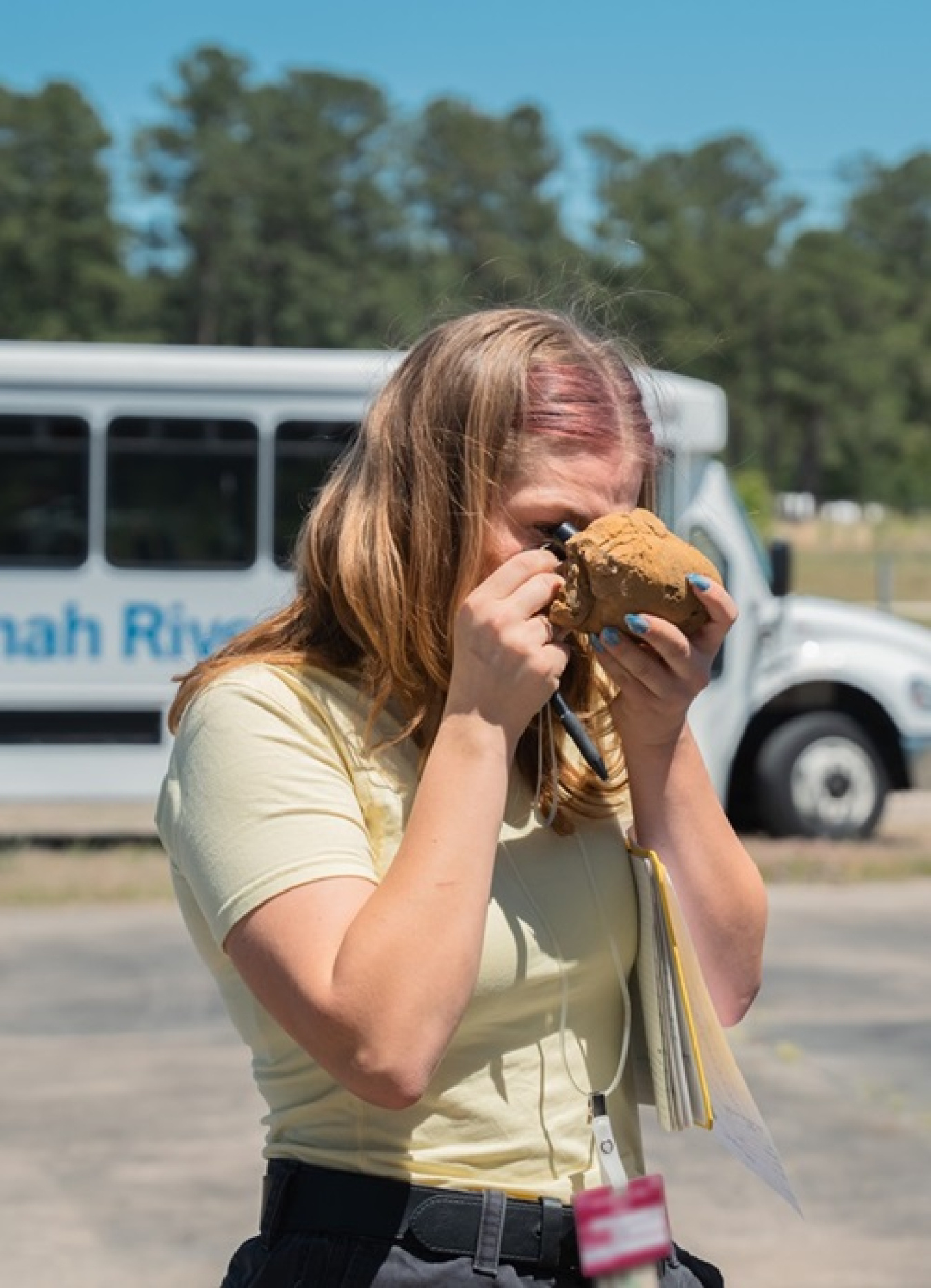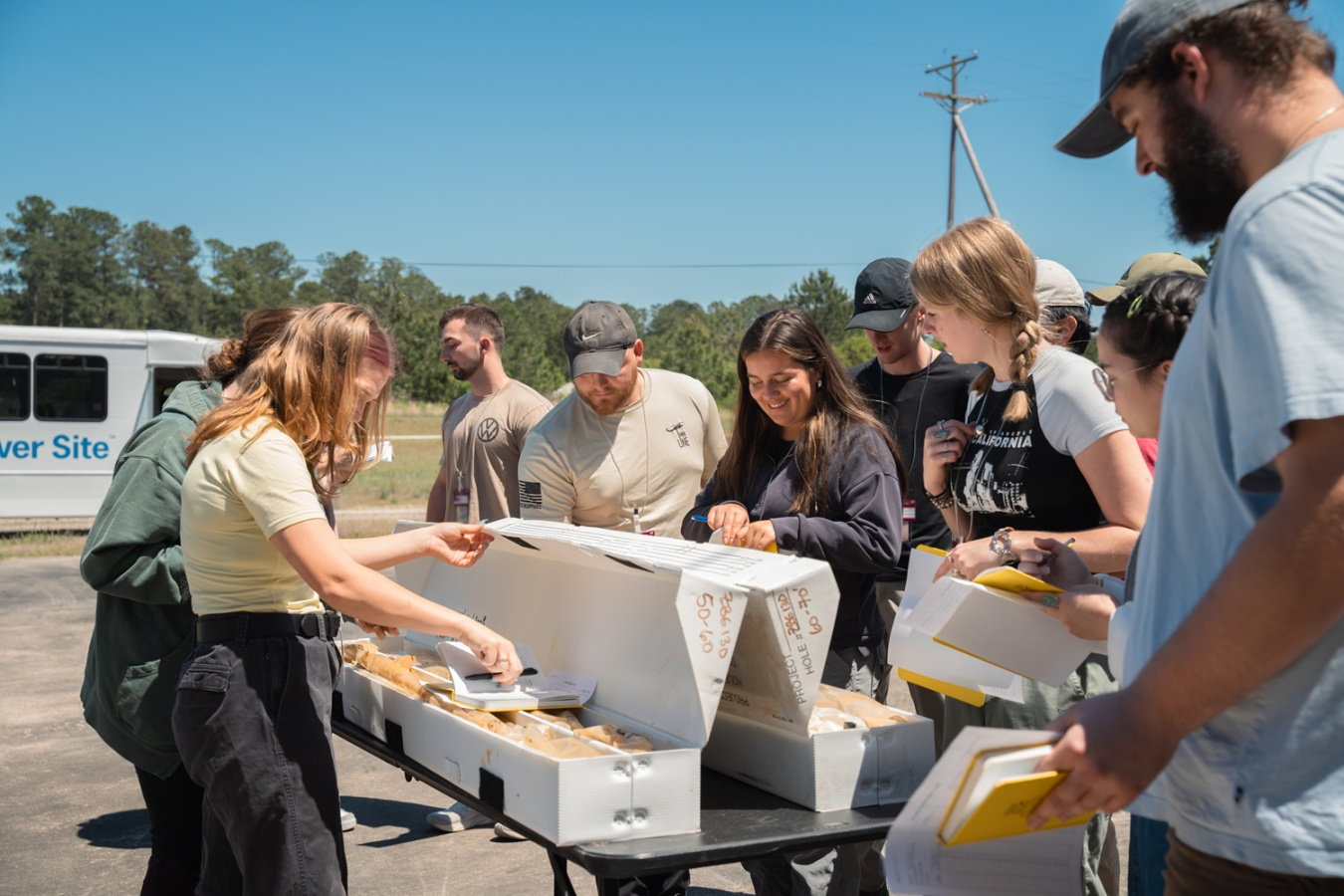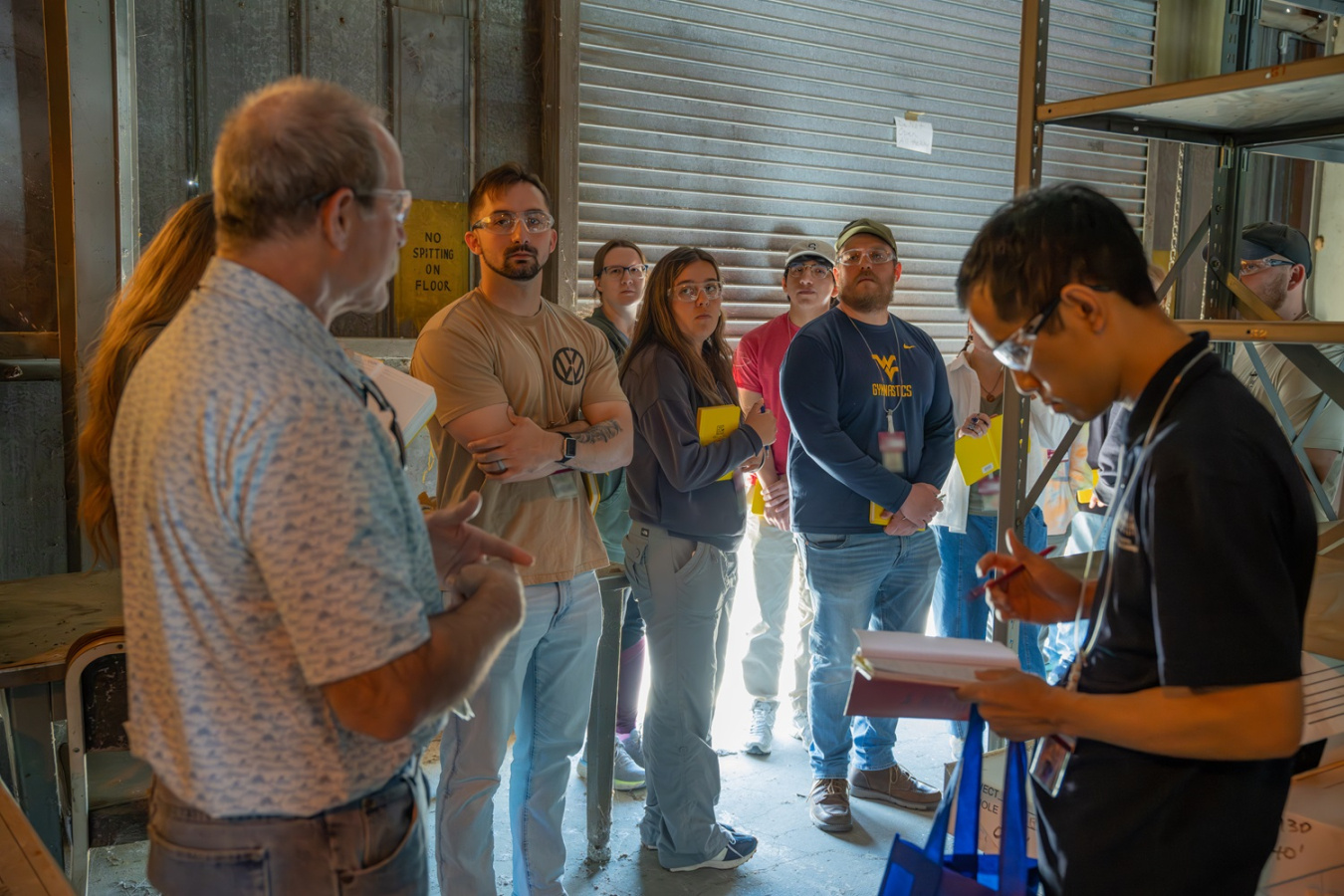Fourteen geoscience students from Georgia Southern University recently toured the Geological Core Repository at the Savannah River Site. June 17. 2025.
Office of Environmental Management
June 17, 2025Fourteen students from Georgia Southern University sample coal and saltstone from the Savannah River Site.
Students explore unique archive of subsurface investigations at the Savannah River Site
AIKEN, S.C. — Fourteen geoscience students from Georgia Southern University recently toured the Geological Core Repository at the Savannah River Site (SRS).
The repository, a vast warehouse of sediment and rock cores from SRS, serves as a unique archive of over 50 years of subsurface investigations, with core samples valued at over $60 million.
“Core samples are invaluable for understanding sediment heterogeneity, physical properties and seismic hazards,” said Kim Mitchell, Education Outreach lead with U.S. Department of Energy Office of Environmental Management contractor Savannah River Nuclear Solutions (SRNS). “They help predict groundwater movement and the behavior of contaminants and mitigants, while adding geotechnical rigor to facility siting and foundation design. Beyond SRS, core samples support university research, state and federal geologic surveys and museum displays."

Georgia Southern University junior Delaney Love uses a hand lens to examine core from the Savannah River Site.
Edward Lo, assistant professor of geology at Georgia Southern University, was inspired to make SRS an annual visit for his sedimentation and stratigraphy course after reading about the repository.
“I hope my students connect textbook concepts with real-world applications to ensure that nationally important work is done to the highest standards,” he said. “Witnessing the Cold War history and the site’s modern role was eye-opening. Every American should visit to understand how federal tax revenue is invested in our defense."
During the visit, students used various tools to inspect and describe soil samples from the site’s Z Area, home to the Saltstone Disposal Facility. They used hand lenses for detailed inspection, grain-size scales for classifying sediments, color books for accurate color description and geologic field books to record their observations.
The “rock library” at the Geological Core Repository at the Savannah River Site is home to over 1,200 cores stored in 22,000 boxes that create 35 miles of geological core.
Dillion Daniels, a senior geosciences student, has been in the Army for nearly seven years as a geospatial intelligence imagery analyst. There, Daniels developed a passion for geosciences.
“I see potential for new, motivated individuals to aid in core organization and inventory,” Daniels said. “The operational standards at SRS were similar to those I used in the Army, making the tour even more relevant to my experience."
Core samples are costly to collect, sometimes exceeding $1 million due to the depth and complexity involved. It's a cost that many universities cannot afford, making the site’s collection a unique and critical resource.
The samples also support environmental reports for agencies such as the U.S. Environmental Protection Agency and the South Carolina Department of Environmental Services.
"By offering students the opportunity to visit the site, we provide them with valuable insights into our operations and mission. Engaging with students allows us to nurture future professionals,” SRNS Environmental Compliance and Area Completion Projects Geologist Terry Killeen said. “Over the years, we have hired several interns from local schools in South Carolina and Georgia, showcasing our commitment to developing local talent.”
-Contributor: Mackenzie McNabb
To receive the latest news and updates about the Office of Environmental Management, submit your e-mail address.



